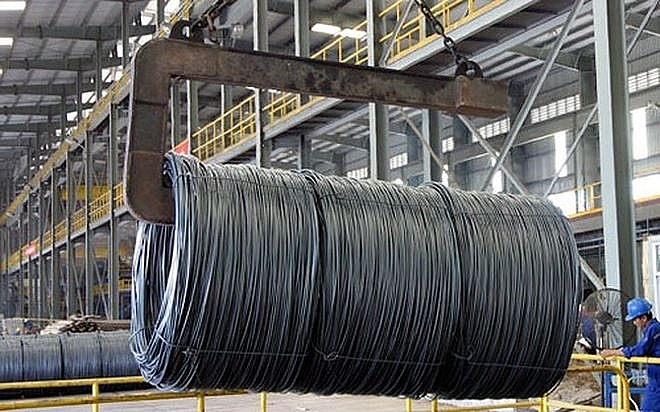Exports decelerate after half a year of impressive growth
Unlike the impressive growth rate in the previous months, in July 2022, exports decelerated. Information of the Ministry of Industry and Trade has just released shows that exports in July 2022 decreased by 7.7% compared to the previous month, to US$30.3 billion.
 |
|
Iron and steel is one of the export items plummeted in July 2022. Photo: Internet |
The main reason is due to the decline in export turnover of agricultural, forestry and fishery products (down 7.4% compared to the previous month, which decreased in most agricultural products, except vegetables and rubber) and manufacturing industry group (down 7.2% compared to the previous month).
In the manufacturing industrial commodity group, the most reduction is fertilizer of all kinds, down 33.3%; all kinds of iron and steel down 23.3%; computers, electronic products and components, down 22.6%.
However, compared to the same period last year, export turnover in July 2022 increased by 8.9%. The bright spot in export is exporting a group of mineral fuel increased by 23.5%, mainly due to the increase of 83% from the export of crude oil compared to the previous month.
In the first seven months, export turnover exceeded US$200 billion (reaching US$ 216.35 billion), up 16.1% over the same period last year. In particular, the domestic enterprise sector increased (up 17%), higher than the foreign-invested sector (up 15.78%).
"This continues to show the efforts of domestic enterprises in restoring production and business, resuming the supply chain in the conditions of the disease is complicated," a representative of the Ministry of Industry and Trade assessed.
In the direction of import, the Ministry of Industry and Trade clearly stated: In July 2022, the price of strategic and essential items (petrol and gas) and prices of production materials (coal, wood, fertilizer, titanium and aluminum) continues to increase, leading to increased import turnover of some items, increasing the total import turnover of the country's common goods.
Import turnover of goods in July 2022 reached US$30.3 billion, up 3.4% over the same period last year. In seven months of 2022, the import turnover of goods was estimated at US$215.59 billion, up 13.6% over the same period last year.
Accounting for nearly 89% of the total import turnover of Vietnam in seven months is the import group (raw materials for domestic production) with a turnover of US$191.6 billion, up 14.6% compared to with the same period last year.
In particular, the import of energy products continues to increase, partly due to the increase in import output, partly due to the scarcity of the supply, the import price increases. In particular, coal import turnover increased by 122.8% over the same period last year due to the demand of coal thermal power plants; All kinds petroleum increased by 125.7%; crude oil increased by 31.2%; and liquefied gas increased by 43.3%.
Therefore, in terms of commercial trade balance, in July 2022, as well as seven months of 2022, Vietnam maintained a superficial state with a surplus level of 21 US$20 million and about US$764 million over the same period. (it was $3.31 billion US trade deficit before that).
Forecasting time for risks and challenges is still very large. World economic prospects will continue to be dominated by the direction of the Russian-Ukrainian conflict and adjust the financial and monetary policy will affect supply and consumption, thereby affecting production activities in both import and export.
Gasoline prices and input materials are high, resonating with domestic consumption recovery momentum to create inflation pressure, high production costs, local labor shortage and demand for consumer goods is not essential.
The Ministry of Industry and Trade determined that in the last months of the year, it will focus on promoting exports, promoting production development through supporting businesses on market information, export promotion, taking advantage of commitments in the free trade agreements (FTA) signed; through global value chains to search for new markets; Encouraging businesses to innovate to create new products.










